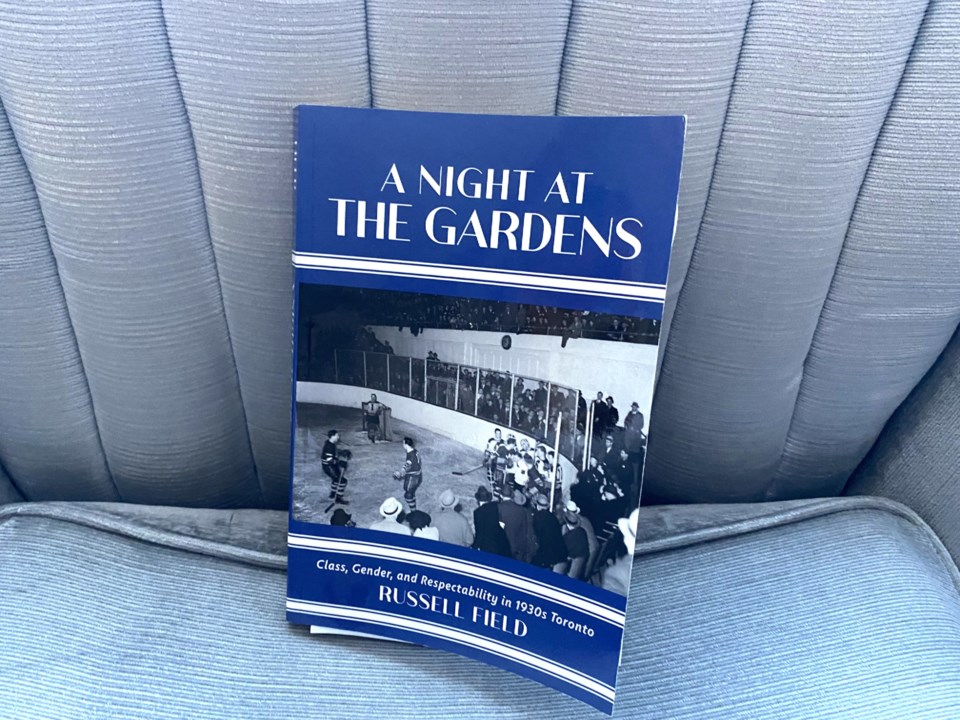YORKTON - When it comes to hockey in its earliest days – at least in Canada and by default North America – there were two Meccas the Forum in Montreal and Maple Leaf Gardens in Toronto.
The two venerable buildings were where the heroes of multiple generations met to battle for hockey glory and young boys dreamed of one day playing.
The buildings in a fashion became at least as large as the events they housed – more famous for many than even the Parliament Building in Ottawa.
It’s an old adage ‘if these walls could talk’ but in the case of a building like Maple Leaf Gardens it seems so appropriate.
So what author Russell Field decided to do – at least in essence – is listen to those walls and in so doing creating a book that is a bit about hockey of course, but more about a building and the fans who gathered there in the early days of the Garden.
“When Toronto’s Maple Leaf Gardens opened in 1931, manager Conn Smythe envisioned an arena that would project an aura of middle-class respectability. In A Night at the Gardens, Russell Field shares how this new arena anticipated spectators by examining varying spectator behaviours, who the spectators were, and what the experience of spectating was like,” describes the University of Toronto Press publisher of the book A Night at the Gardens.
“Drawing on archival records, the book explores the neighbourhood in which Maple Leaf Gardens was situated, the design of the arena’s interior spaces, and the ways in which the venue was operated in order to appeal to respectable spectators at a particular intersection of class and gender. Oral history interviews with former spectators at Maple Leaf Gardens detail the experience of watching the spectacle that unfolded on the ice during each hockey game.
A Night at the Gardens tells the fascinating story of how one prominent public building became such an important part of Toronto society.”
In actuality Field said the book started out as the focus of a PHD dissertation, and with that “in the rear-view mirror” it remained an interest which ultimately became a book – a book some 20 years in the making.
Field said he maintained a fascination with the subject and found himself “wanting to know more.”
Field told Yorkton This Week that it was important to remember at the time the Garden opened professional hockey was not what it is today, with many fans still more interested in amateur efforts.
So there was a push “to put butts in the seats,” as the building opened in November 1931.
“I wanted to know more about who the people (in the seats) were,” said Field.
The book is admittedly a bit different you pick it up just as a hockey fan. While a number of fine hockey books take the time to look at the world at large as a back drop to the story on a sport – here Field really uses the sport as a back drop to a social account of the fans who gathered at the Gardens.
The result is a book that straddles two areas, a social telling of a time and its people, and of course hockey.
Field said it is a work that tells the story “pf what happened in the stands and on the ice.”
The latter is likely to sell some books to hockey fans, but it is the story of the fans which make A Night at the Gardens an important book.
So often things about sport seem to happen in isolation of one important component of the enterprise – the fan.
It seems it is simply expected fans will show up.
Even as Maple Leaf Gardens opened it wasn’t exactly clear who might fill the seats, and that is where Fields takes readers, into the stands to meet the people who spent their dollars through a depression to cheer a hockey team.
Of course telling the story of fans was a challenge for field.
Newspaper coverage would tell scores and who netted goals, but only on occasion did the tell of the fans although it did happen.
March 1, the sports pages of Toronto's daily newspapers reported on the home team's 3-2 victory, with the “highlight of a rousing struggle” being a ten-player, third-period brawl. Each of these reports also made mention of a spirited first-period encounter between Maroons defenceman Lionel Conacher and a local spectator. Conacher, a talented multi-sport athlete who would be named Canada's male athlete of the half century in 1950, was by 1937 already venerated by the central Canadian press at the “Big Train”, and events involving him regularly merited comment. During this particular game against the Maple Leafs, he found his stick being held by a man sitting rink-side in one of the Gardens' more expensive rail seats. Annoyed by the spectator's interference and, as sports editor Tommy Munns noted in the Globe and Mail, “exasperated”, Conacher “wrenched the stick free and brought the hickory down on the head of the interfering one.” The audience enjoyed the spectacle. Even though “Conacher was given a ten-minute penalty ... the crowd cheered him when he returned to action.”
A Night at the Garden will not be for everyone. This is not exactly the easy read many hockey books are. You are being given something of a social lesson here with hockey as the bait to draw you in. In the end you will learn more about people than about hockey, which is fine, but readers show appreciate that going in too.

